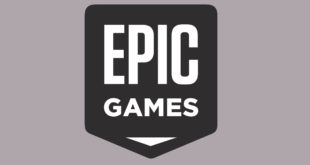Capcom has enlisted Los Angeles developer Spark Unlimited to continue the adventures in the world of E.D.N. III.
Lost Planet 3 is a prequel to the original game, offering fans of the franchise a very different experience in the harsh, icy conditions of the unforgiving planet. The game combines on-foot, third-person perspective action with first-person mech combat against an array of monstrous Akrids.
For the first time in the best-selling franchise, the game is being developed with Unreal Engine 3 (UE3), which suits Spark well thanks to a long history of working with Unreal Engine technology.
“The previous two current-gen titles developed by us used UE3, so the decision to use it for Lost Planet 3 was natural,” says Matt Sophos, Lost Planet 3 game director at Spark Unlimited. “It allows us to leverage our past experience and optimised workflow, thus increasing our efficiency and quality.
UE3’s robust toolset also makes it the best choice for level design because it enables us to hit the ground running from day one – laying out gameplay spaces and prototyping encounters with enemies and obstacles.”
POWER TOOLS
“The tools are extremely powerful for artists and designers who are creating content for a game,” states Sophos. “UE3 has a fast iteration pipeline and the ease of use allows artists and designers to be directors so they can work on shaping the scene and the experience rather than simply creating assets that go into a game.
“Another major benefit to using Unreal is the amount of documentation and training videos made available by Epic. This can dramatically cut down our training time for new employees.”
Although there are many tools to work with, Spark used Unreal Kismet and Unreal Matinee extensively for Lost Planet 3. Sophos says these tools empower level designers, artists, animators and sound designers to quickly prototype, iterate and polish gameplay scenarios and cinematics.
With multiple departments being comfortable with Kismet and Matinee, engineers and designers are no longer the bottleneck when it comes to implementing assets, which facilitates rapid development and leads to a higher level of polish across the entire game.
Sophos says the communication between Spark and Epic has been great in its ongoing relationship, plus his studio has been able to utilise the Unreal Developer Network (UDN) for any issues throughout development.
“UDN offers a great community knowledge base that we can tap into any time a question arises for how to tackle tough problems,” explains Sophos.
“This has helped answer many questions that would normally have taken weeks of research, allowing us to iterate more quickly than if we had to recreate the process from scratch.”
Spark has added proprietary technology on top of UE3, including dynamic storm states that punctuate the volatile nature of the hostile planet. The storm states allow for environmental storytelling, as well as giving the player new visuals that show the damage and effects of extreme weather conditions on the planet and its inhabitants.
“Most of our additions on top of UE3 are gameplay systems to support Lost Planet 3, such as a more robust third-person camera system, animation choreography, a collision system for larger creatures, a multi-threaded AI formation system and so on,” he says.
MASTERS OF SCI-FI
One of the many things that stands out in this new adventure is the cinematic look and feel of the game. The world of E.D.N. III comes to life in a new way, thanks to the game’s setting that takes place early on in the human habitation of the distant planet.
Sophos says the art direction of Lost Planet 3 has drawn many inspirations from visionary directors such as Ridley Scott and John Carpenter. Using UE3’s volumetric lighting capabilities of the engine, Spark was able to more effectively create the moody atmosphere and lighting schemes to help create a sci-fi world that shows as nicely as the reference it draws upon.
“Even though it takes place in the future, we definitely took a lot of inspiration from the Old West frontier,” says Sophos. “We also wanted a lived-in, retro vibe, so high-tech hardware took a backseat to improvised weapons and real world firearms. The Utility Rig feels more like a trucker’s big rig than a mech.
“Surprisingly, there was only so much inspiration we could take from the arctic. Snow environments can easily devolve into looking like Antarctica, so we were careful to accentuate the alien nature of the landscape to constantly remind players this is not Earth.”
In addition, Spark aims to deliver a campaign that’s massive in scope yet fuelled by an intimate story and down-to-earth characters that drive a player’s desire to see what happens next.
It is also pushing the multiplayer experience, and has chosen to implement a robust suite of gameplay modes that are separate from the single-player narrative campaign in order to best serve the needs of both experiences. Lost Planet 3 is out on Xbox 360, PS3 and PC in 2013.
Thanks to Spark Unlimited for speaking with freelancer John Gaudiosi for this feature.

 MCV/DEVELOP News, events, research and jobs from the games industry
MCV/DEVELOP News, events, research and jobs from the games industry



